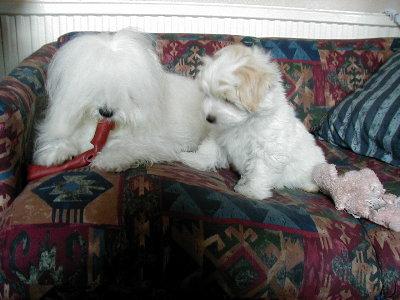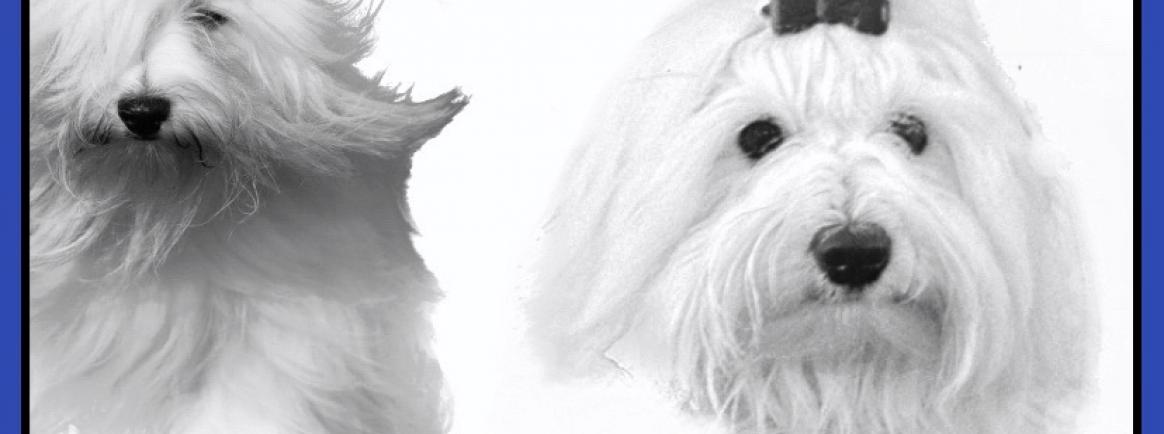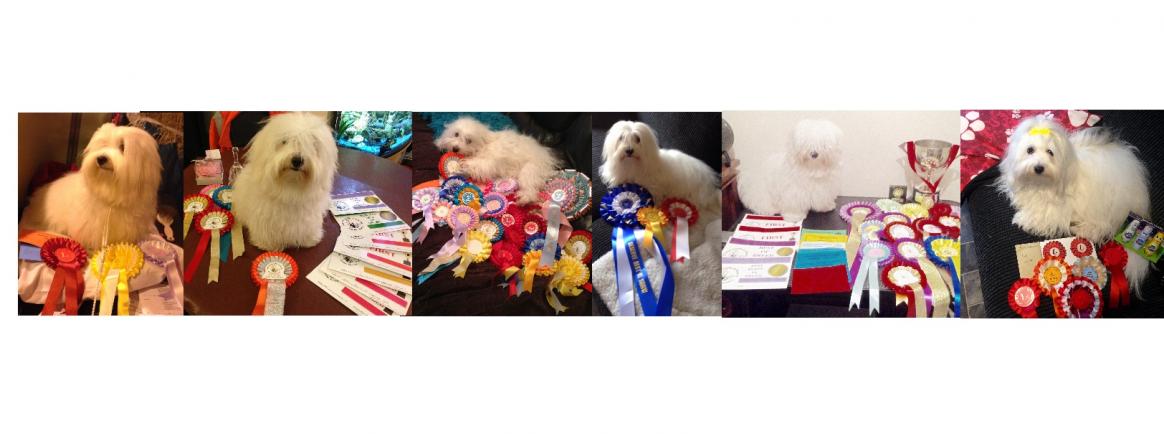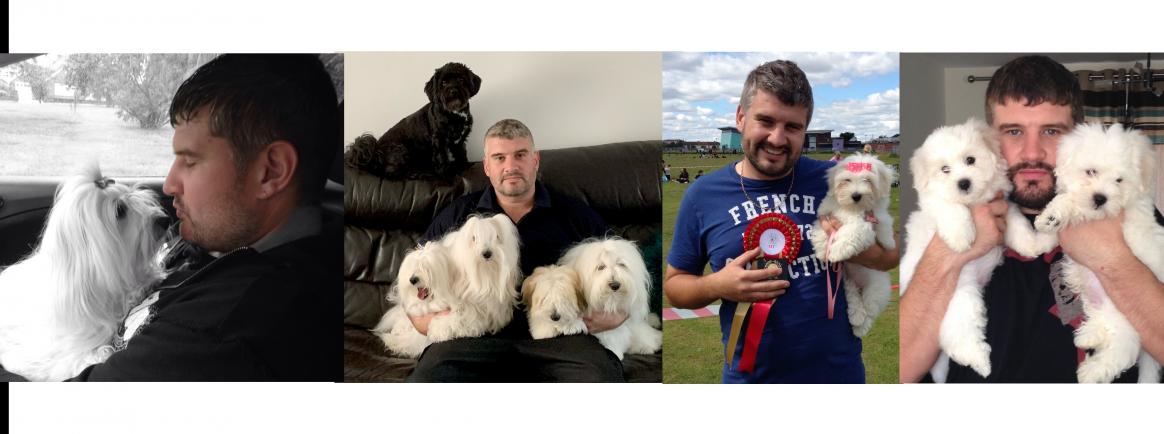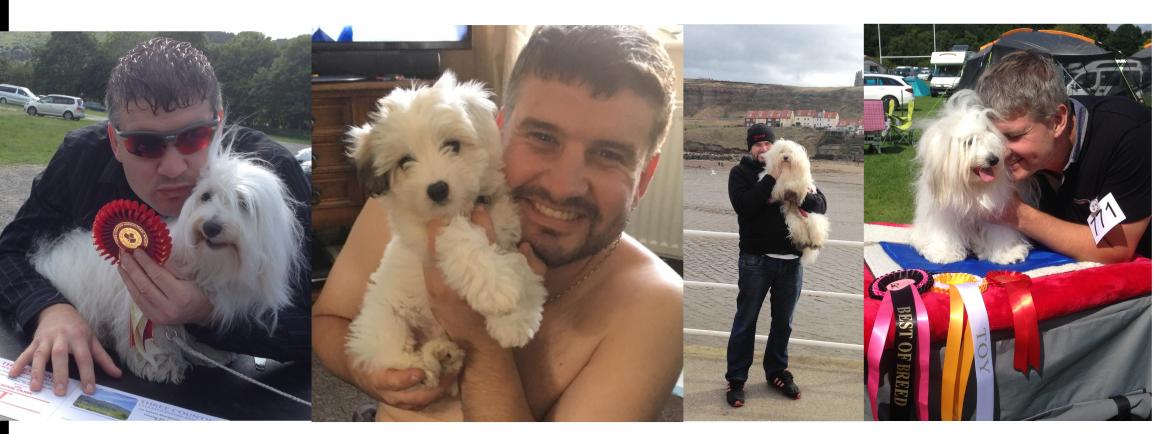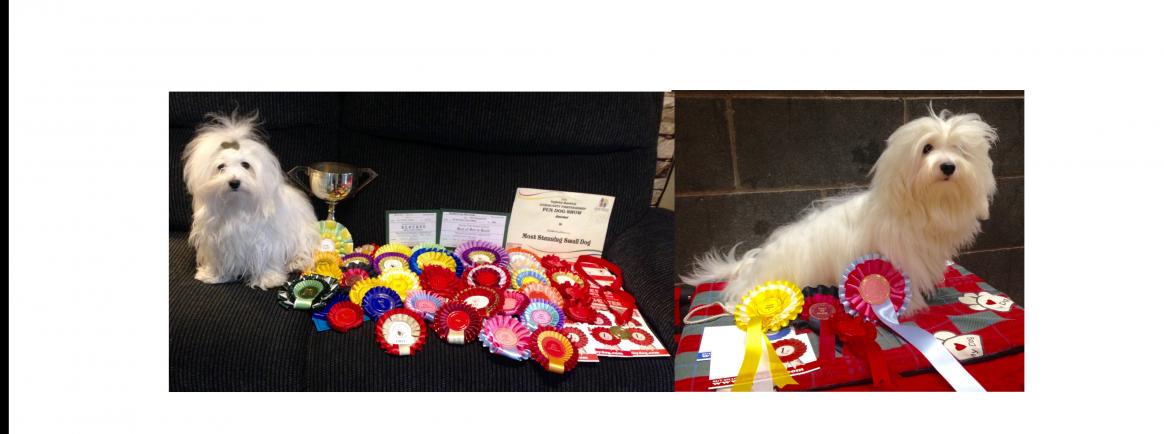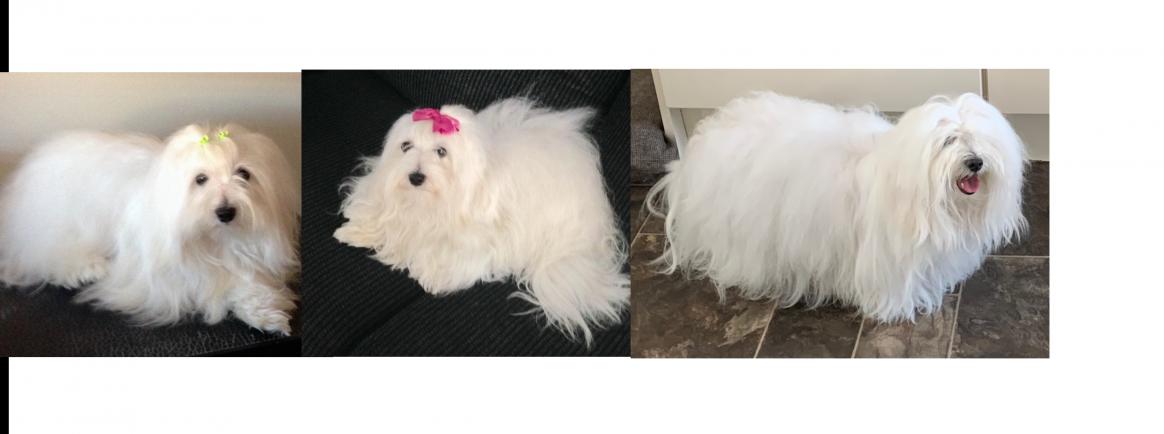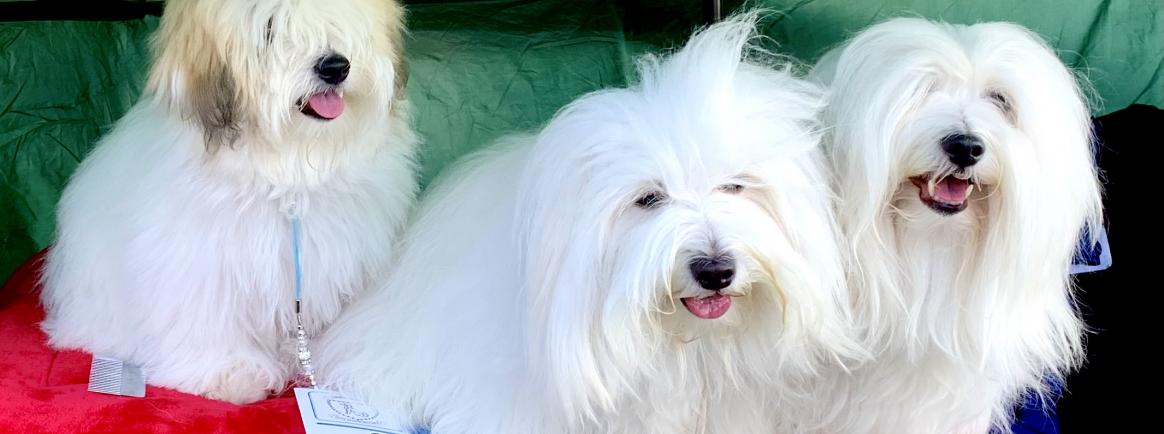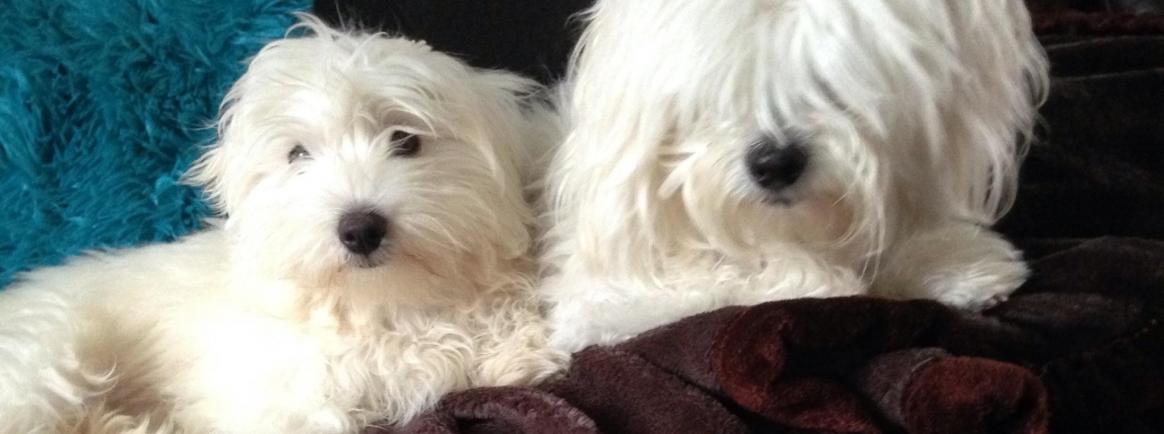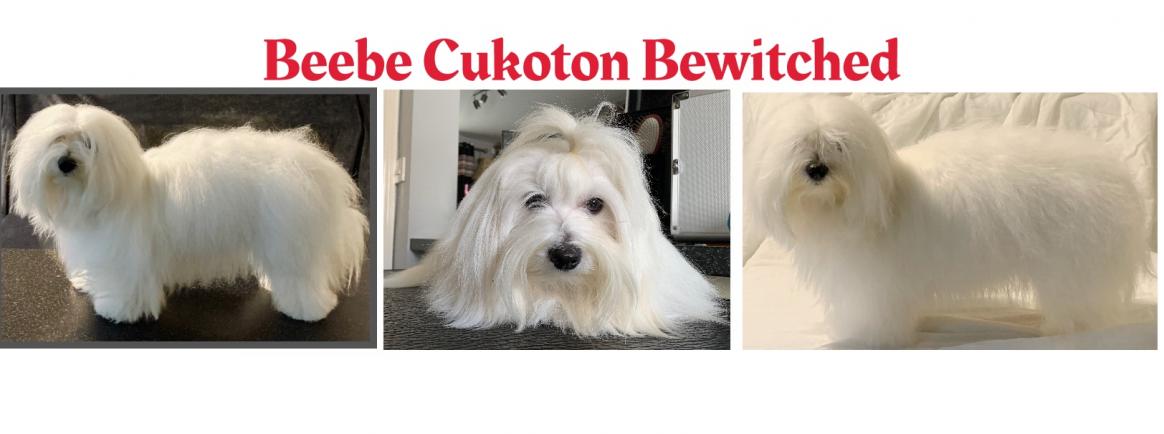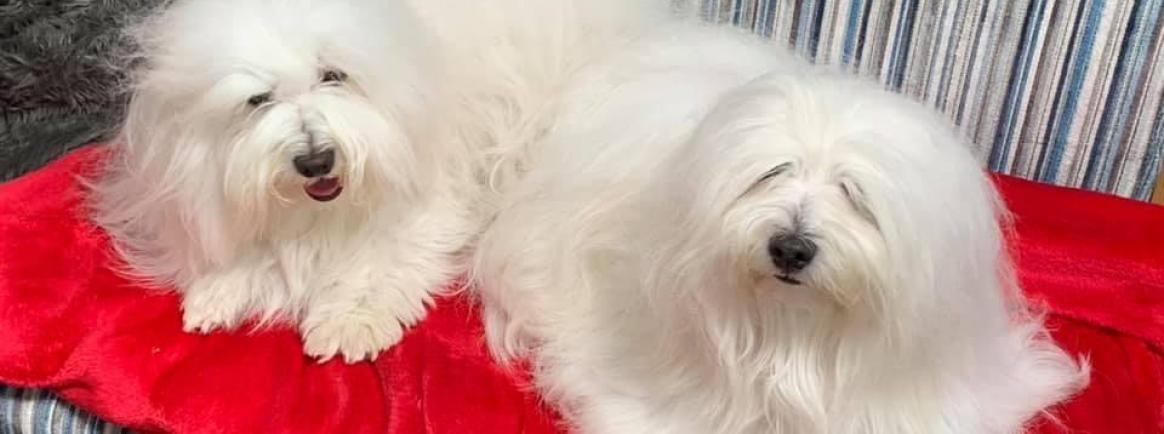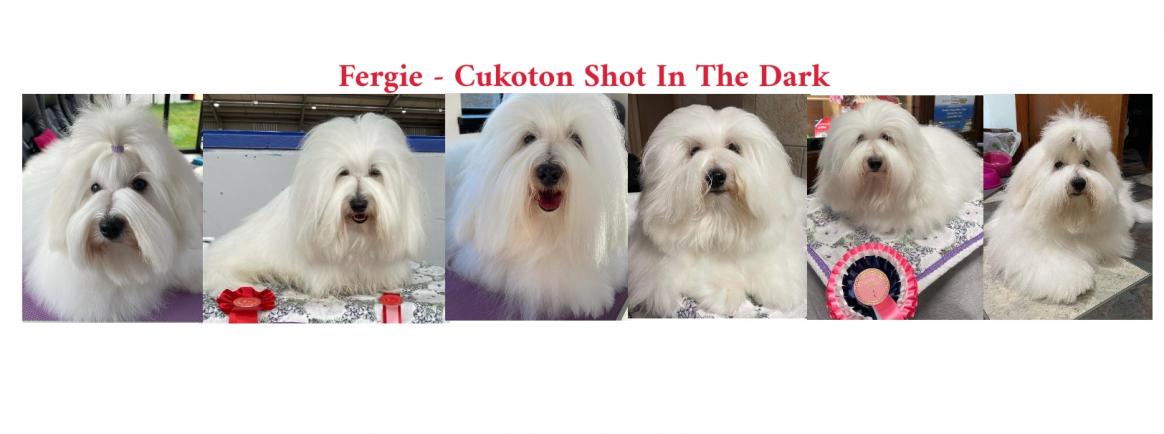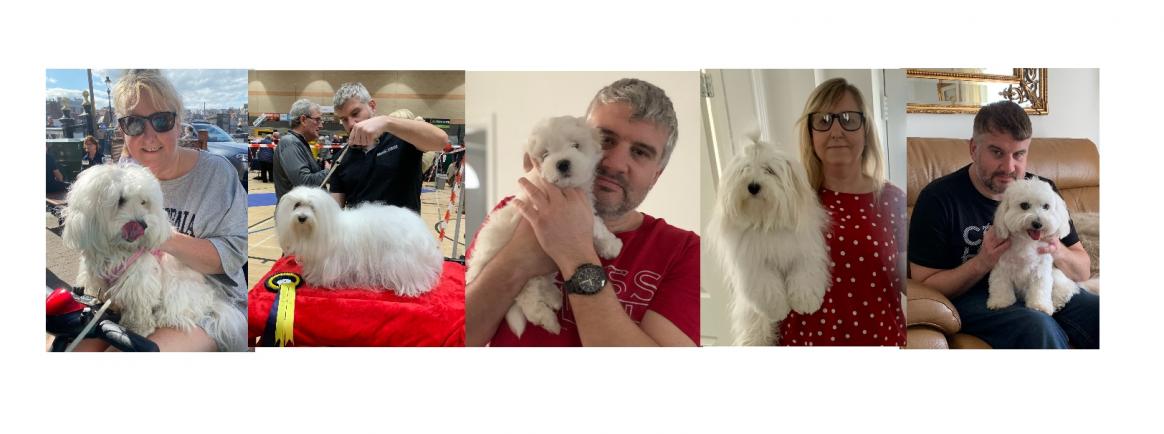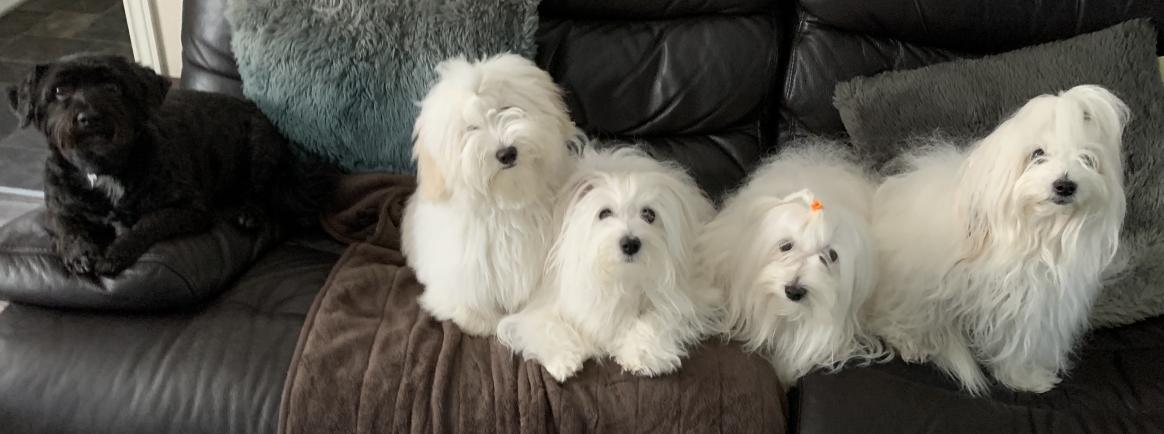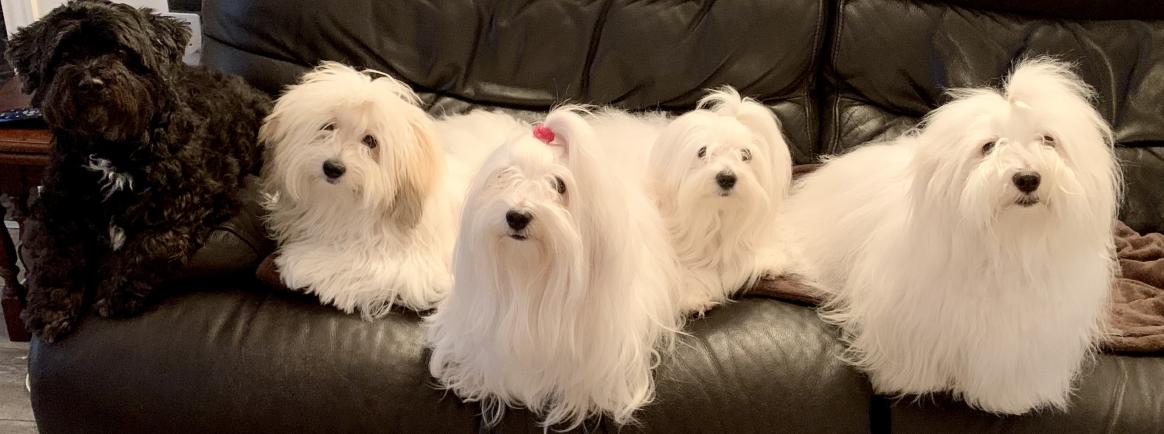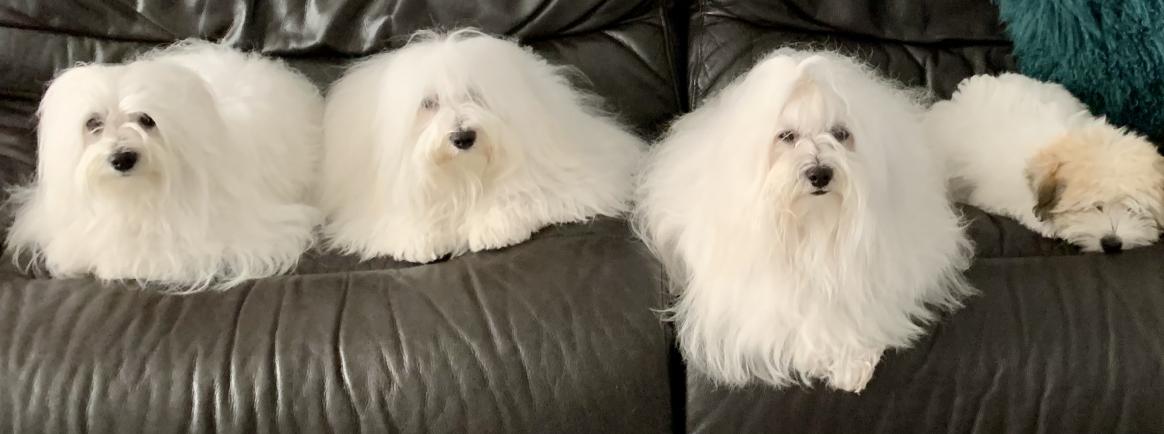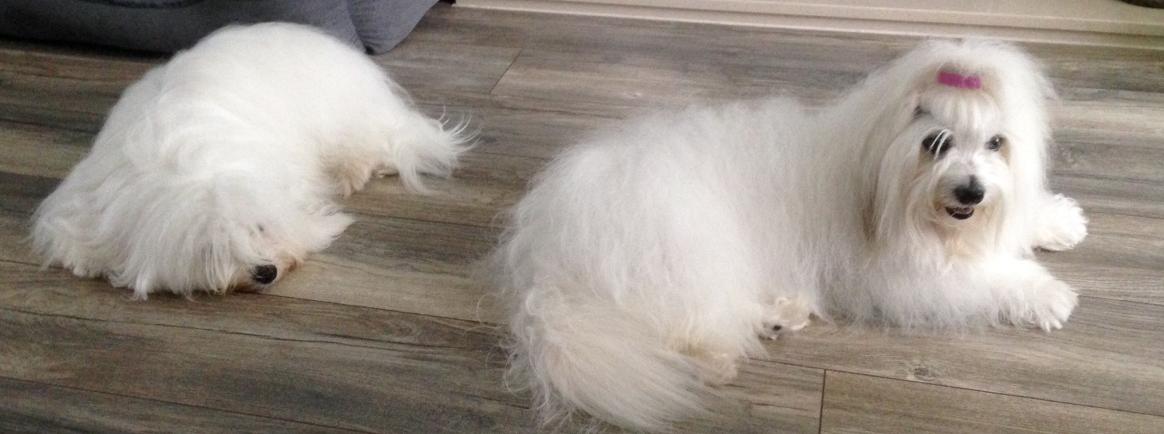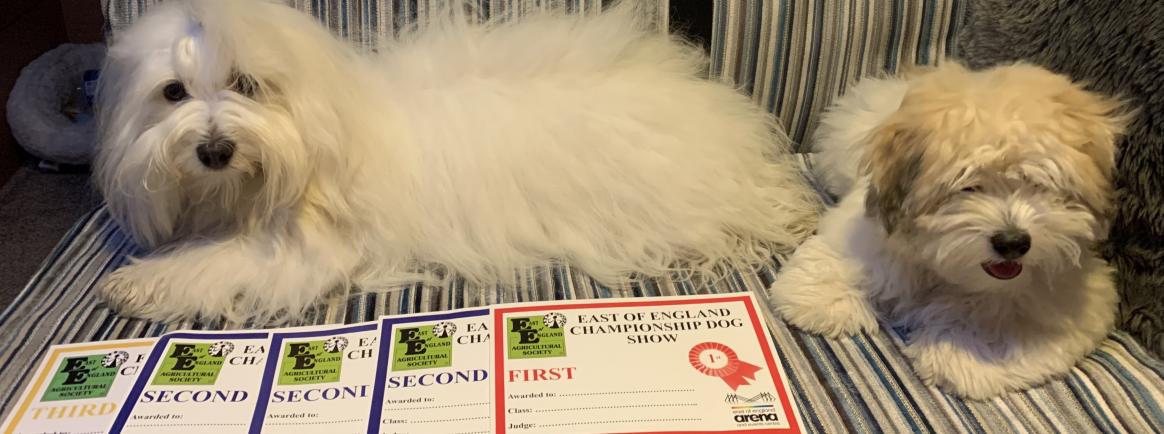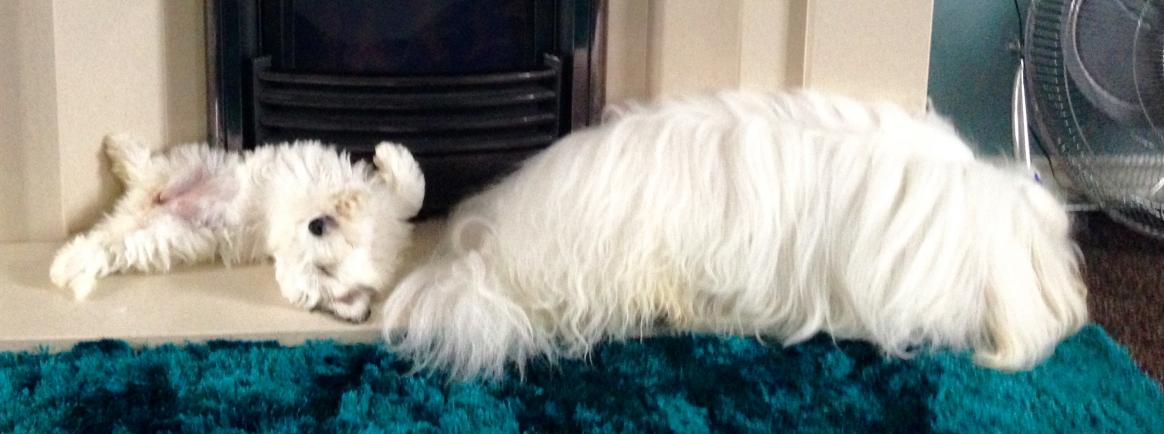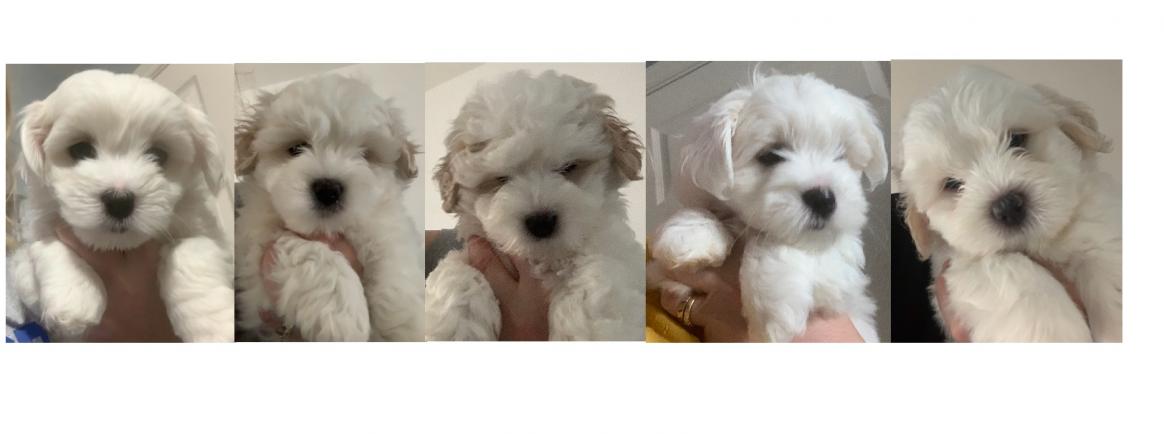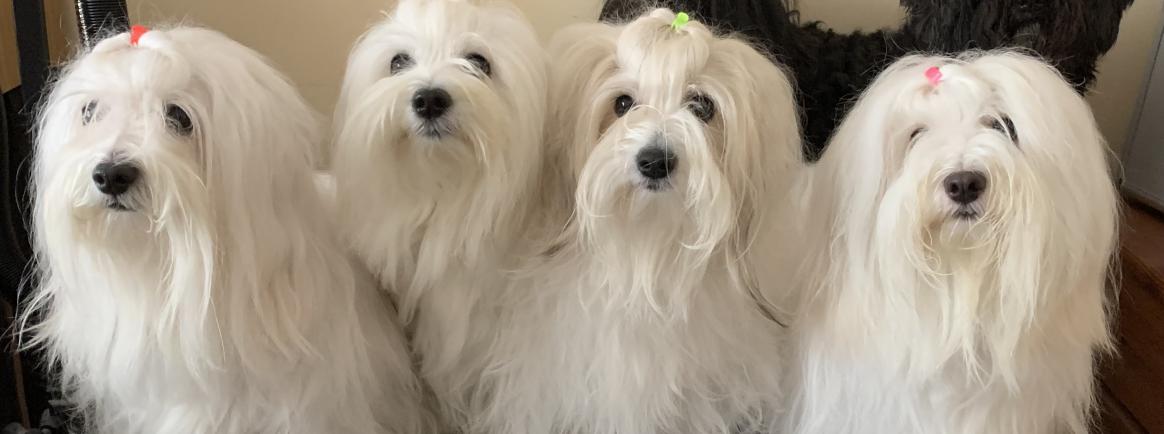Preparing for your Coton de Tulear puppy
So you have chosen to get a Coton de Tulear puppy. There is a lot of preparation to be done before bringing your Coton home, this to make sure that he settles in as smoothly as possible to his new home and family.
Whether you get a puppy or an adult dog you must find somewhere warm and draught free to put your dogs bed. Many people use the kitchen or dining room as these rooms seem to have the most suitable floors to be able to clean, in case of accidents during the house-training period. If possible, fence off a part of the kitchen for your puppy to play in, which contains no hazards. In the rest of the kitchen make sure that there are no wires around or any other dangers that may hurt your new dog.
Hazards in your home
Plants can cause poisoning and injury especially if the plant contains thorns. Put poisonous plants or thorny plants out of reach.
Electric cables and wires cause electrocution. Your dog could also injure himself if he pulled on the cable of large raise items, such as a television cord; this could drop on top of him causing major injuries. Use childproof sockets, run wires behind walls, do not leave exposed cords plugged in, Hideaway all wires and cords where possible.
Chemical detergents and medication cause poisoning or acid burns to the skin. Keep them safe in a tightly closed cupboard.
Balcony and stair way your puppy may fall. Install stair gates to prevent puppy from climbing.
Broken fragments, needles or nails can cut the paw area and even be swallowed. Never leave objects lying around the floor.
Swimming or paddling pools may drown your puppy. Stop access all together; never leave the puppy alone near water.
Open garden puppy can run away and may get run over. Secure your back garden with solid fencing making sure that your puppy cannot dig under the fencing either. Also make a toileting area for your new puppy, so that the puppy will learn to go to the toilet where you want him too. Simply make a small square using bricks, about 2 brick high and then fill the square with gravel.
Doors can be very dangerous, as puppy may be caught and squashed in the shutting door or even locked out in cold temperatures
Children’s toys can be swallowed or cause choking
As you can see its very important to walk around your home and check for any of these
hazards.
Beds and cages
One of the most important decisions is where is the puppy going to sleep?
There are many dog beds available in most shapes and sizes. When buying a bed for your puppy consider that in a few months time he will be teething, so the best option would be a plastic bed with special veterinary bedding which you will be able to buy from a local pet store. I also recommend that you use a cage, crate or even an indoor kennel. The reason for this is mainly to give the puppy a place where he feels secure and can rest without being disturbed. After saying the word bed to your puppy and pointing to the cage the puppy will soon go into the cage on his free will, thinking that this place is his own den .The best idea is to put the dogs bedding inside the crate leaving enough room for a sheet of newspaper in case of accidents in the first few weeks. Your puppy must never be confined to its cage for long periods. A puppy will never soil where he sleeps as he has already been trained that by his mother. Remember that a small puppy cannot go throughout out the night without relieving himself so for the next few weeks or so, expect a present on the newspaper the next morning.
Another good reason for buying a cage is that when your puppy is teething and you have to leave him for a few hours, the cage will stop him of chewing your furniture and household objects which will take a great deal of stress out of both your lives. A puppy may chew through anxiety, teething, and boredom, if you can prevent the puppy from chewing when he's teething usually he will never chew you home as an adult. If you have children, or children visit, the cage is definitely the ideal choice for both you and your puppy, as when the dog gets tired of the child’s attention it is able to go into its cage for some peace and quiet. If you do see your dog go into its cage because it is tired of the children always close the door and instruct the children to leave both the dog and the cage alone.
Food and drinking bowls
Your puppy Coton de Tulear will need two bowls, one for their food and the other for fresh water every day. When buying the bowls buy heavy ones so that they aren’t very easy to pick up or be knocked over. Fresh water must be available for your puppy at all times. Never put too much water down, as all puppies like to play especially with their bowls of water. Stainless steel bowls are probably the best bowls to use as they are easily cleaned and the puppy will be unable to chew them. If your puppy is very young or has difficulty-keeping solids down raised bowls are now available.
Lead and Collar
You will probably collect your puppy when he is about nine weeks old. Never rush to start walking your puppy on a lead. Start with the introduction of the collar. The best collar to introduce a puppy to is a cat collar, or a nylon one they are light and will not harm your puppies delicate neck. At first leave the collar on for about 30 minutes and play with your puppy while he is wearing it to take his mind off the collar. Slowly increase the time with the collar on over a few weeks, soon the collar will be no problem to him. Now its time to introduce him to the lead, once again put the lead on and let the puppy play always keeping an eye on your dog so that he doesn't get the lead caught around any thing and cause himself damage. Once he is used to seeing the lead its now time for you to hold the lead. Your puppy will probably protest at first walking backwards when you want him to go forward, this is a very natural behaviour for your puppy. Whilst holding the lead encourage him to come to you saying the word walk, or come. You can use treats or lots of praise to do this. Try to keep the lead very slack so that there is no pulling on your puppy’s neck. Their necks are very fragile until they get to four months of age. Before your puppy has had all of his injections introduce him to the noises of traffic by carrying him up and down roads. Take him near workmen drilling, and seeing and hearing lorries this will make life allot easier when you are finally able to walk him outside for the first time. As your puppy gets older he may begin to pull on the lead trying to take you where he wants to go. The best deterrent for this is to stand still and refuse to walk until the lead is slack again, it will take time and you might have to stop twenty or thirty times on one walk but it does work. Soon your puppy will realise that if I pull I'm not going to go anywhere, so I had better walk at heel.
Once your puppy is around six months old there are many collars and leads available. Matching ones in all colours, leather collars, half leather and half chain, web collars, nylon collars, the choice is up to you. Whichever collar you do choose it is important that your puppy only wears their collar when they really need too as wearing collars to much can damage their coats. If you do not want to show your puppy then they can wear a collar at all times. Puppies do not need to wear a choke chain collar, and they should never wear a harness as sometimes the harness can encourage pulling.
Once you have got your dogs collar picked, its time to get an identification tag. The only information you need on the tag is the number of your house, postal code, and telephone number including area code. Many people are using tattoos as means of tracing their dogs in an event of loss or even theft. A tattoo is permanent and is usually done in the dog’s ear or hind leg. If you wish to get your dog tattooed, ask your veterinarian for more details. The advantage of tattoos is that they cannot be removed or lost. The latest identification device is the microchip. It is a tiny chip injected between the dog’s shoulder blades and can be read by a special scanner, some microchips come with a GPS device so you will never loose your beloved dog. Microchips are available from your veterinarian and doesn't cost a great deal of money. Once your dog has been chipped, the chip will last a lifetime and no one can tell that your dog has been chipped. Some dogs are very rare and have been known to get stolen. So identification is the only way of proving that the said puppy is yours.
Toys and chews
All puppies enjoy playing and chew, especially when they are teething so it is important to provide toys that your puppy can chew safely. Toys for puppies come in many varieties, shapes and different materials. Select a good quality toy that your puppy will be unable to tear apart and swallow. I recommend purchasing latex toys, as latex pieces that are torn off toys can pass through a puppy's system without problems incurring. Be careful in certain dog toys of the squeakers, as these can cause choking or worse if swallowed. Lots of dogs enjoy chewing rawhide chews, but even these have their disadvantages. Small pieces that have been torn off can be swallowed and cause intestinal blockages or even choking, I NEVER GIVE MY DOGS THESE! but if you give your puppy one of these types of chews, it is important to watch him carefully and remove any pieces that get to swallowable size. There are other chews available like dried chicken breast, the product says that it’s 100 percent protein and completely safe for dogs. Your puppy will love them. Never allow your puppy to have any old shoes or other human articles, as a puppy can never tell the difference between a new shoe and an old one.
